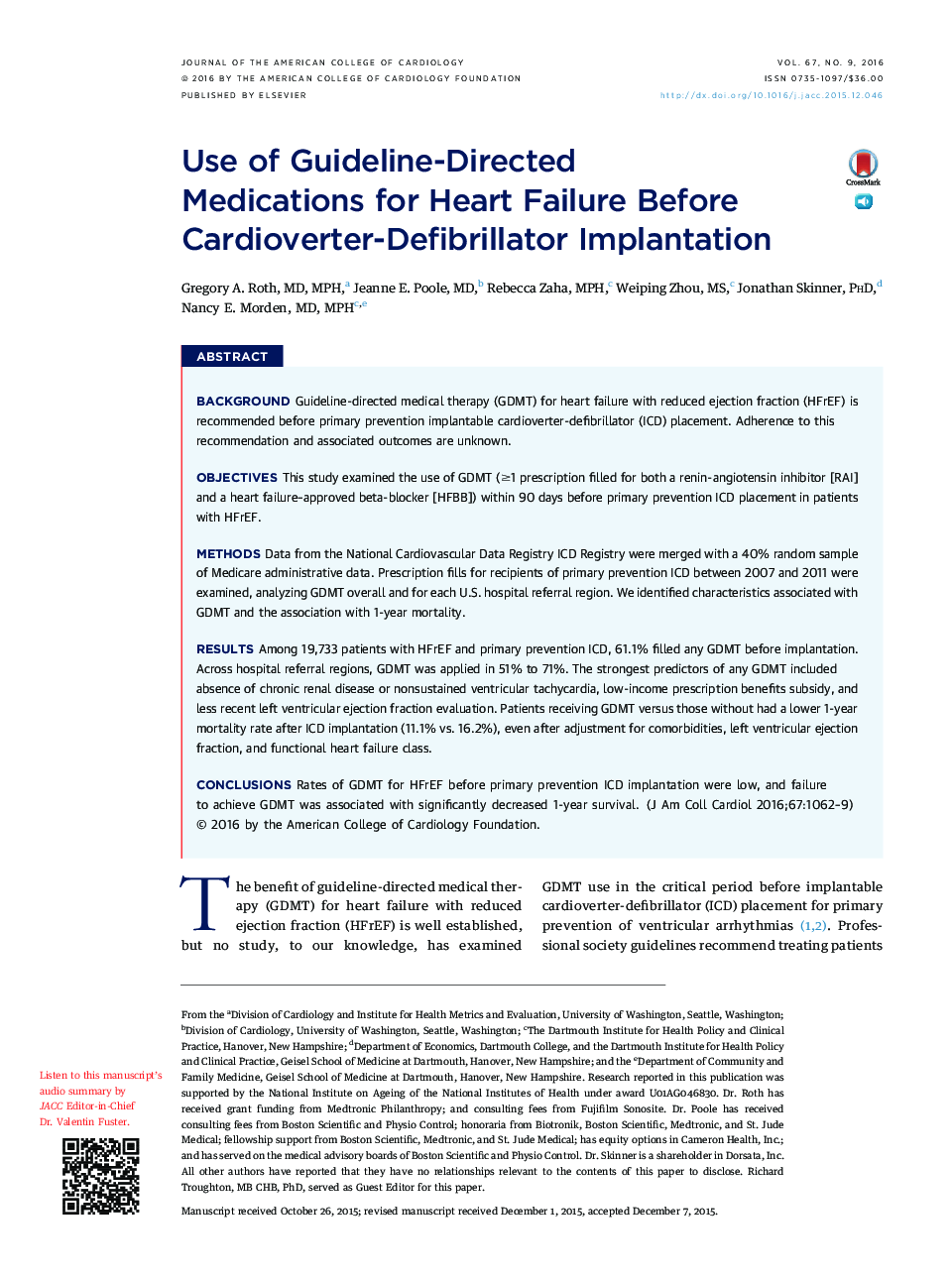| Article ID | Journal | Published Year | Pages | File Type |
|---|---|---|---|---|
| 5982068 | Journal of the American College of Cardiology | 2016 | 8 Pages |
BackgroundGuideline-directed medical therapy (GDMT) for heart failure with reduced ejection fraction (HFrEF) is recommended before primary prevention implantable cardioverter-defibrillator (ICD) placement. Adherence to this recommendation and associated outcomes are unknown.ObjectivesThis study examined the use of GDMT (â¥1 prescription filled for both a renin-angiotensin inhibitor [RAI] and a heart failure-approved beta-blocker [HFBB]) within 90 days before primary prevention ICD placement in patients with HFrEF.MethodsData from the National Cardiovascular Data Registry ICD Registry were merged with a 40% random sample of Medicare administrative data. Prescription fills for recipients of primary prevention ICD between 2007 and 2011 were examined, analyzing GDMT overall and for each U.S. hospital referral region. We identified characteristics associated with GDMT and the association with 1-year mortality.ResultsAmong 19,733 patients with HFrEF and primary prevention ICD, 61.1% filled any GDMT before implantation. Across hospital referral regions, GDMT was applied in 51% to 71%. The strongest predictors of any GDMT included absence of chronic renal disease or nonsustained ventricular tachycardia, low-income prescription benefits subsidy, and less recent left ventricular ejection fraction evaluation. Patients receiving GDMT versus those without had a lower 1-year mortality rate after ICD implantation (11.1% vs. 16.2%), even after adjustment for comorbidities, left ventricular ejection fraction, and functional heart failure class.ConclusionsRates of GDMT for HFrEF before primary prevention ICD implantation were low, and failure to achieve GDMT was associated with significantly decreased 1-year survival.
